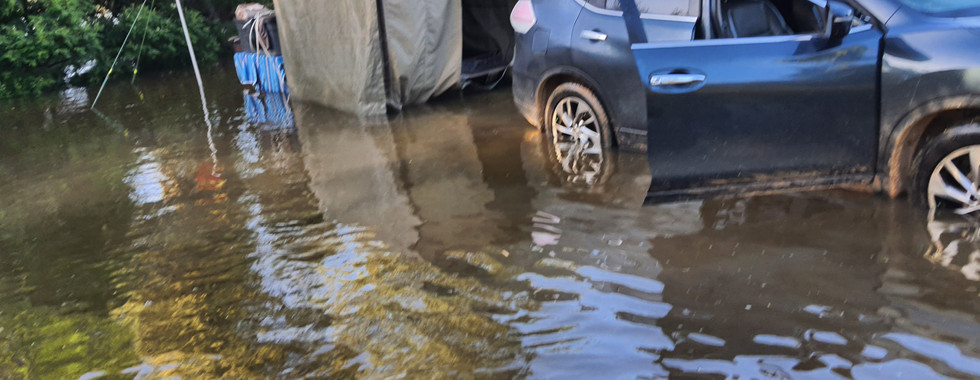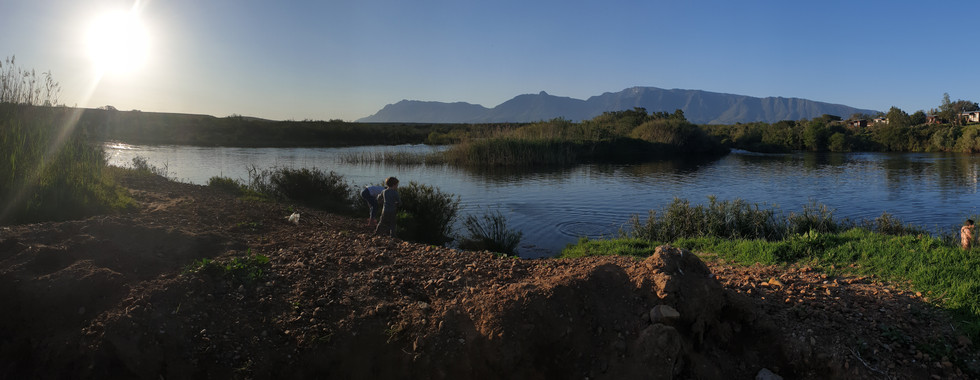InsideOut Camping / Education Focus: Joint Pain
- InsideOut

- Nov 18, 2021
- 6 min read
Anyone that knows Jay and I know about at least some camping adventures. We started about 15 years ago, a few basic camping essentials and a Runx. We were such novices, never having experience. In so may ways we are still learning, case in point, our adventure recently on the Breede river with rains in the Cederberg raising the water level during the night, quietly dangerous.
Camping teaches you how little you actually need. It is surprising. We find the simplicity so relaxing, our biggest question usually being what we making for supper!. Time seems to slow down.
There are so many places to camp around the western cape. We have a once a month ritual and want to share some of our places and stories with you in this blog. So, where to go and when? Our favorites, Breede river, especially in the Winelands side, (Worcester, Roberston, Bonnivale), away from water we love love love the Cederberg, with so many options as it is bigger than you expect. We recently discovered Tulbagh, another great place.
How do we choose our sites with so much choice? Simply put, what activites are available at each place, also considering our kids. The more options the better. A river means you can take inflatables, swim and fish (catch and release). Most places have walks and some have added experiences on site or nearby. Klipkrans has been a staple in the warmer months. Our recent river flooding experience was rather unexpected and exceptional. I have linked a montage of photos of our camping experiences above, including the flood :).

Cederberg is exceptional in the cooler months, but does go below freezing in winter. The rocks, walks, waterfalls, caves and silence is out of this world. We do this area in winter, taking a small heater for nights. We generally choose sites with power. We have 2 young children and making sure they are reasonably comfortable most the time is important to us having a restful weekend. Later on we look forward to experiencing the more remote non electrified sites. We started our camping journey in Algeria, one of the gateways to Cederberg, and since been to many, many other places. Our current favorite is Alpha Excelsior farm.
It offers fantastic retro caravans and chalets accommodating all preferences. It is a wine and olive farm which is a big plus!, with a waterfall walk about 20min away. You can also take pets! It's a kids favorite.
We find we go through cycles, we move around depending on time we have available and the season. Further away is Bontebok and Garden route SANParks. These are fantastic parks, with at least a river and great facilities. Ebb and flow and Storms are some of the best places in the country, if not the world!!! Karoo national park is also an amazing experience, again, you need to be traveling through for a long weekend... these SANParks will each get there own blog.
Each camper has there own priorities in terms of equipment. I love our coffee maker. You need shelter, something to sleep in and on as well as food and preparation equipment. Vehicle space is usually the guide.
So what have we learnt from camping? Oh my goodness. We have had some extraordinary times and learnt some lessons.
Most recently, the Breede can seriously flood, even if its not raining by you!
A good nights sleep should be a priority, you will have a grumpy bad experience if you do not sleep well, think insect repellent, check weather conditions/heat/cold and pack accordingly, the earth cools down at night (sometimes, especially winter is crazy) and you need a barrier. Consider toilet trips at night - not fun in the cold - so drink less in the evening :) - that includes the kids.
Camping = braai/fire, be equipped and make sure you don't run out of wood/firelighters and matches, don't forget a fireside desert!
Keep electricity off the ground (think about our quiet flood)
We find a laptop and hard drive with movie favorites a must, perfect back up in bad weather and easy way to get the kids in at night.
Bugs... they attracted to light, so minimise and use red lights, or like we, fairy lights! You need a medical kit for the rare (but absolutely happen, Josh was bitten this past Kruger...) insect/arachnid bites. Have an emergancy plan especially if you don't have good cell signal and be prepared... for anything!
A fan in Summer and a small fan heater in Winter
Next time we will discuss day trips! Education Focus: Joint pain
We have discussed inflammatory pain and the associated conditions that can aggravate joint pain in you spine and limbs. In this article I want to cover the kinds of joints in our body and some sources of pain that are as a result of injury.
Joints form a connection between bones, articulations. Some can provide stability, and some are designed for movement. Categorizing joints varies according to either the type of connective tissue or functionally (how much they move). I am going to discuss the classification of joints according to tissue type, fibrous, cartilaginous and synovial. I will avoid technical jargon and focus on practical implications and summary.
Fibrous Joints:
In these joints, the bones are connected together with fibrous tissue, with no joint space and therefore most are immovable, e.g. the sutures of the skull that close and fuse after birth; the immobile “joints” between your teeth and sockets and those bones held together by something called and interosseous membrane. These joints seldom cause pain, for instance with trauma and infection.
Cartilaginous Joints:
In these joints the bones are joined entirely by cartilage/fibrocartilage. They provide slightly more movement than Fibrous joints but less than synovial joints. They are divided into Primary (e.g. between developing bones in childhood, growth plates) and Secondary (e.g. known as symphysis such as pubic symphysis)
Synovial Joints:

These joints can move a lot more with the primary goal of the synovial joint being to prevent friction between the articulating bones. The extent of movement varies among subtypes, with nearly all the joints of the limbs falling into this class. The key difference between synovial and other joint types in the presence of a joint cavity, containing a synovial membrane and fluid with cartilage covering the articular surface of the bones. Some synovial joints have an articular disc/meniscus between the surfaces.
As can be seen in the image, synovial joints, by there very design, move more and therefore have many more potential pain producing structures within making them up.
Joint capsule extending from one bone to the next, made up of two layers: an outer fibrous layer and inner synovial membrane that lines the inner surface of the joint.
Articular cartilage lining and cushioning the articular sufaces.
Joint cavity (space) with synovial fluid between the bones.
Menisci (articulating discs) in some synovial joints like the knee.
Bursae, closed pillow like structures acting as a buffer to friction and cushion usually between a tendon and bone. These are made up by synovial membrane and contain synovial fluid.
Ligaments strengthen the exterior structure of a joint, some areas thicker and stronger like the hip and connect the bones involved.
Tendons are not often directly involved inside a joint as they connect muscles to bones, but in some joints (like the shoulder) are extremely important structures holding the joint together and aiding stability.
Inflammation of these structures usually have a suffix “itis”, such as bursitis, tendonitis, synovitis and capsulitis. When an inflammatory process goes on for more than 3 months it can become chronic, with a suffix “osis”, such as a tendonosis.
When a Doctor or Physiotherapist assesses a joint they perform a series of stress tests and palpation of the various structures to see which are pain producing, hot and inflamed or torn (causing instability). Sometimes, when warranted to confirm a suspicion or exclude something, you may need an Xray or scan.
Every time an injury heals there will be increased thickness and scarring that forms, your bodies way of protecting you from future injuries. As we age these structures have reduced fluid and space between, sometimes bony growths and cartilage damage (such as in arthritis). These are usually normal processes that affect people differently, sometimes causing more inflammation in some and therefore more pain. Movement acts as a lubricator, like in a cars engine, and sometime we need help in moving painful or stiff joints to improve function and reduce pain. Medication, such as anti-inflammatories, can also decrease the pain of an inflamed joint but sometimes comes at a cost in side effects and should be done with the guidance of your Doctor.
I hope this article offers you some insight in to your anatomy and jargon that may be used to describe problems you may experience from time to time. Staying healthy and fit goes a long way to add to the stability and reduce the inflammation of a joint problem. Training should always be consistent and balanced, knowing that nothing good comes from short and brief spurts!





















































Comments